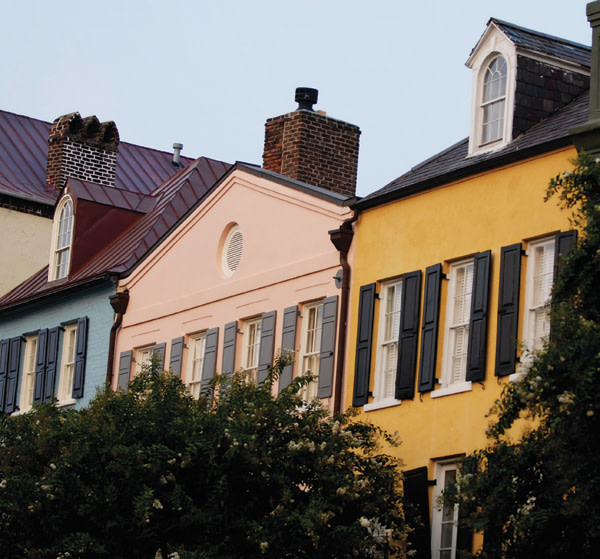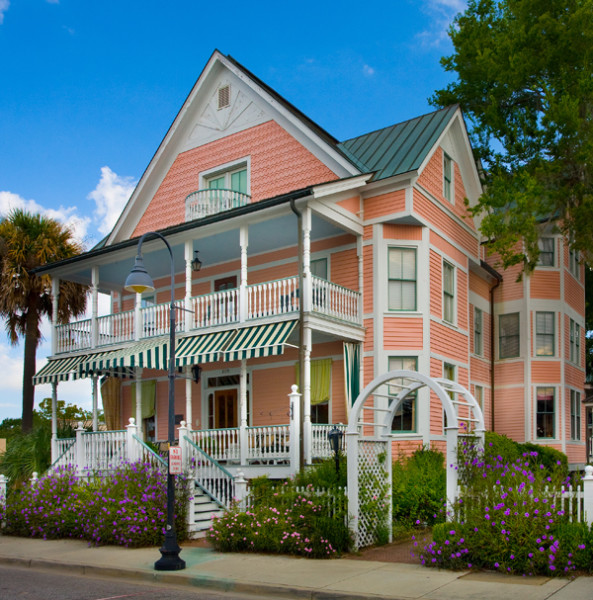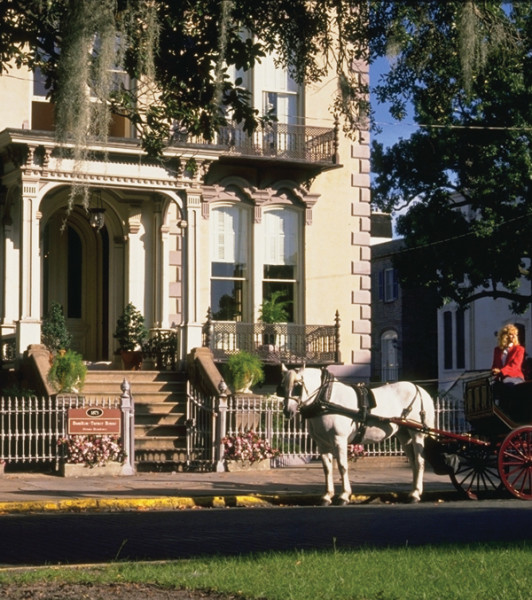
Get off the highway to see places like the ruins of the 1757 Old Sheldon Church in Yemassee, South Carolina, burned by Sherman and then gutted by locals rebuilding their homes.
Drive the main roads between Charleston, South Carolina, and Savannah, Georgia, and you’re there in just over two hours. Or, you could choose a route that meanders down to tiny Edisto Island (population about 641) to see the Tiffany windows at the Presbyterian Church.
Many treasures hide among the hummocks, marshes, bays, sounds, and inlets of the Low Country. The deeply indented shoreline between two of America’s most fascinating cities is a haven for recreational boaters, fishermen, nature lovers, and connoisseurs of historic Southern architecture.
Charleston is “the place where the Cooper and Ashley Rivers come together to form the Atlantic Ocean.” Founded in 1670 as Charles Towne, it was the fifth largest city in the U.S. by 1690. Charleston was one of the few cities in the original 13 colonies to provide religious tolerance, albeit only to non-Catholics. Huguenots came here; after Savannah, it was also one of the first colonial cities to allow Jews to practice their faith without restriction. The 1840 Greek Revival Kahal Kadosh Beth Elohim is the second oldest synagogue building in continuous use in the United States.

A picturesque alley in Charleston; part of the city’s residential Rainbow Row.
Charleston’s legendary old houses include the Aiken–Rhett House, Calhoun Mansion, the Heyward–
Washington House, and the Nathaniel Russell House. Stroll the old streets lined with Charleston’s famous side-porch houses; the Francis Simmons House is a prime example. Outside the central city, the evocative Georgian-era, Palladian-style Drayton Hall and the re-created landscaped gardens at Middleton Place are visitor musts.
They call Charleston the Holy City; numerous steeples rising above the cityscape include the 1751 St. Michael’s Episcopal Church, a Broad Street re-creation of London’s St. Martin’s-in-the-Fields. The street divides two historic areas: North of Broad and South of Broad. South of Broad residents are SOBs; those Slightly North of Broad are called SNOBs. The French Quarter, founded by the Huguenots, is just south of the Market Area along the waterfront. The area near the southern tip of the peninsula is The Battery.

An old-house B&B inn in Beaufort, South Carolina.
Louis Comfort Tiffany’s windows in Edisto Beach are just one reason to leave this beguiling city. From there, head for picture-postcard Beaufort, founded in 1711 (and pronounced byoo-fert). Make your way to Bluffton to see the ruins of Melrose Place.
Savannah, one of America’s great walking cities, benefitted from Georgian England’s love for town planning. In the early 18th century, General James Oglethorpe designed the city on a grid, with streets regularly punctuated by squares.

Carriage tours fit Savannah’s wide boulevards and slow pace.
Old houses open to the public include the Andrew Low House, the Isaiah Davenport House, and Telfair Mansion. Lafayette spoke from the graceful veranda of the Owens–Thomas House, and General Sherman’s infamous march to the sea ended here, at the Green–Meldrim House. Local lore has it that he spared the city for the sake of his mistress, who lived here. It must be pointed out that he didn’t burn any of the beautiful houses in Beaufort, either.







